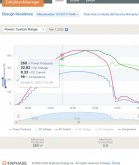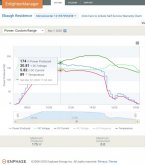I guess I'm the latest DIY Solar guy. Had a system installed in November 2019, went to submit a repair request to determine the contractor is already out of business.
The system is small, 16 325W Canadian Solar panels with Enphase microinverters. On install, there was about 10% difference in production between the high and low panels. That was acceptable. However, now there is a real outlier at 62%.
Attached below is data from a cloudless sunny day. First a good panel adjacent to, and then the problem panel. Can anyone definitely tell from the data if it's the panel or microinverters? I'm going to swap the inverters, the problem will either follow the inverter or stay with the panel. But wondered if this would be obvious to someone more knowledgeable than I am. Basically, the bad panel/inverter has a limit of about 170W.
This problem is not shading. There is obvious shading late in the day just before sunset.
Thanks!


The system is small, 16 325W Canadian Solar panels with Enphase microinverters. On install, there was about 10% difference in production between the high and low panels. That was acceptable. However, now there is a real outlier at 62%.
Attached below is data from a cloudless sunny day. First a good panel adjacent to, and then the problem panel. Can anyone definitely tell from the data if it's the panel or microinverters? I'm going to swap the inverters, the problem will either follow the inverter or stay with the panel. But wondered if this would be obvious to someone more knowledgeable than I am. Basically, the bad panel/inverter has a limit of about 170W.
This problem is not shading. There is obvious shading late in the day just before sunset.
Thanks!




